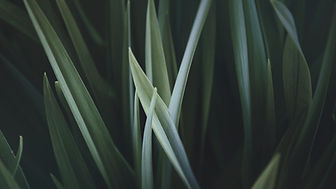
Land Acknowledgement.
I begin by acknowledging that I write from my apartment that is on the traditional unceded territory of the Algonquin Anishinaabe peoples. This place we call Ottawa is still the home to many Indigenous people from across Turtle Island and I am grateful to have the opportunity to live, learn and work on this land.
My name is Melissa Kwan, and I am a guest on Turtle Island, while my father and mother immigrated from China. They have moved around to a few different locations in what is now called Toronto, Ontario, but I have only lived in one home. I grew up there where I attended elementary, secondary, and post-secondary school. Although we are not settlers, I have still benefited from the land as it has given me a home to live in, food to eat, including plants and animals, water to drink and bathe, nature to enjoy and a place to connect with friends and family. Toronto, Ontario, which comes from T’karonto, meaning trees standing in water. It was built on stolen lands from the traditional territory of the Wendat, the Anishinaabeg, Haudenosaunee, Métis, Chippewa, and the Mississaugas of the Credit First Nation. Treaty 13 also know as the Toronto Purchase was established in 1787 and they are the surrender of the lands from the Mississaugas of New Credit to the British Crown. The Toronto purchase was revisited after some disputes in1805, but the purchase was settled in 2010 for $145 million which covered 250,800 acres of land. I acknowledge that the historical and current genocide has destroyed many Indigenous communities. This land is still home to many First Nations, Inuit, and Métis today.
As a teacher candidate in a settler society, I spend time remembering and unlearning my own education about Indigenous Peoples. I respect and listen to Indigenous Peoples ways of knowing, perspectives, experiences, and stories and use resources that are created by them.
Incorporating Indigenous knowledge can improve the quality of student education and the understanding for non-Indigenous students too. Students may not learn about Indigenous Peoples outside of school and we have the opportunity to shape these children every day to be equitable, global justice citizens. It is important to understand that the education system was/still is a negative thing to Indigenous families as the residential schools were a part of forced assimilation. As a teacher, it is crucial to create relationships with Indigenous peoples, families, and communities to help with the healing. We want to have students who have a greater understanding of the culture which includes the good and bad parts in relation to the relationship with the land, spirituality, traditions, residential schools, and genocide.
It is my duty to educate students about the truth in Canadian history which isn’t from the Eurocentric perspective. I want to bring reconciliation into the classroom to dismantle colonialism and bring light to the Indigenous perspective. I will continue to examine how my own biases and knowledge affects my teaching. In the classroom, calls to action include using age-appropriate material about residential schools, genocide, Treaties, and Indigenous Peoples history. In addition, I recognize I am not the expert in the room as this is not my culture, and I am still learning. It is key that as a teacher, I fully understand and acknowledge the cultural meaning of artefacts and traditions, to ensure it is not cultural appropriation. Furthermore, I want to build intercultural understanding, mutual respect, and empathy in the classroom. This includes reflecting upon current practices and sharing resources with other teachers. All schools should have a class(es) about Indigenous studies or have an Elder as a key resource to tell their own stories for teachers and students to learn.
References
Antoine, A., Mason, R., Mason, R., Palahicky, S., & France, C. (2018, September 05). Respecting protocols. Retrieved from https://opentextbc.ca/indigenizationcurriculumdevelopers/chapter/respecting-protocols/
Commission of Canada, T. A. (2015). Calls to action. Aboriginal Policy Studies, 5(1). doi:10.5663/aps.v5i1.25647
Guide to acknowledging first peoples & traditional territory. (n.d.). Retrieved from https://www.caut.ca/content/guide-acknowledging-first-peoples-traditional-territory
The University of British Columbia. (2017). Topic 1: Reconciliation through Education. Retrieved from https://www.youtube.com/watch?v=XwanLC7Lu0w
Welcome. (n.d). Whose Land. Retrieved from https://www.whose.land/en/
Ontario. (2020). Map of Ontario Treaties and Reserves. Retrieved from https://www.ontario.ca/page/map-ontario-treaties-and-reserves